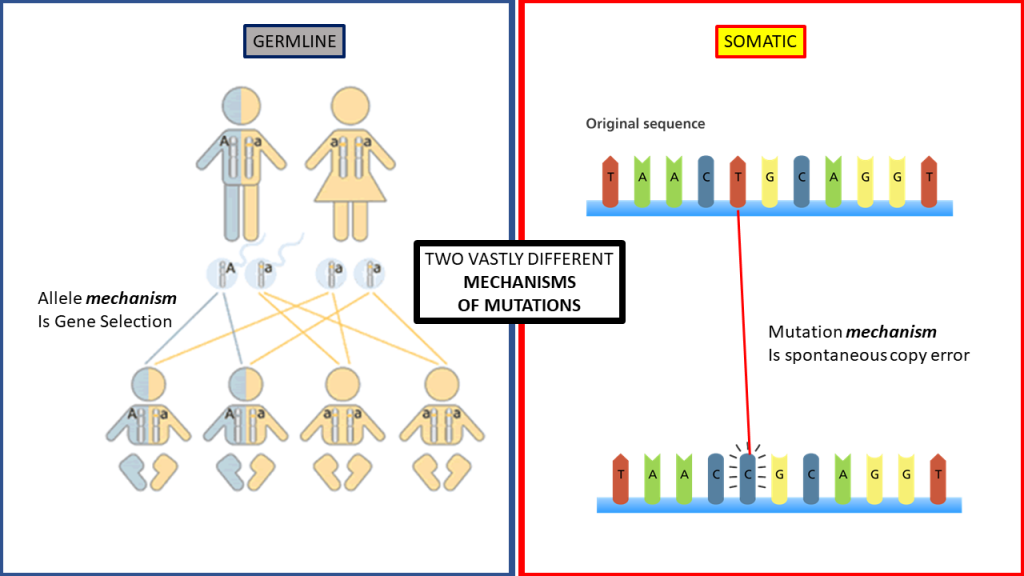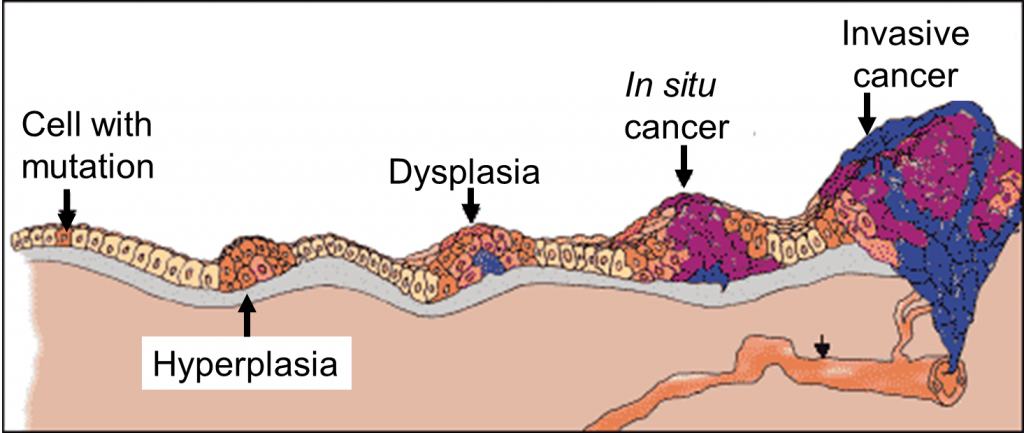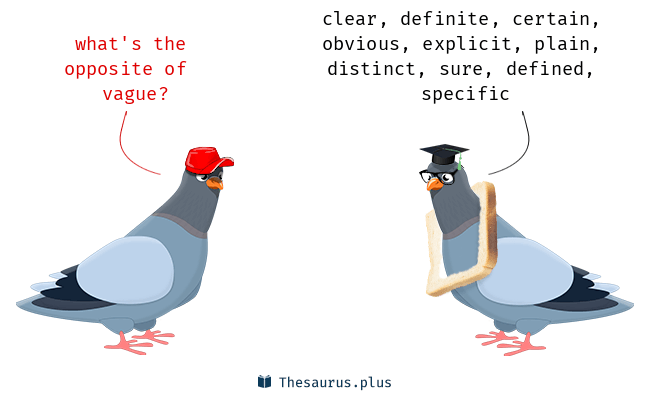The terminology of Naturalism (including common descent evolution) is generally kept quite vague and imprecise. The term “evolution” can be used to describe everything from the newest Audi to any observable change in a virus. The continued use of such ambiguous language within the debate of Creationism vs. Naturalism benefits Evolutionary Theory.
Indeed, the effects of heredity on offspring being called “evolution” renders the entire proposition of “Evolution” as very easy to accept idea. No one (in their right mind) denies such variety in species emerging from genetic “change” within heredity— it is observable.
Brittanica states: “Mutations arise from changes to the DNA of a gene.”1 Could we get anymore imprecise? Should we not explain the “how” (the mechanisms) for these “changes” occur?
As an example, consider the term “mutation.” The term mutation is vital to evolutionary Theory, as it expresses the mechanism that ultimately provided all the wide variety of life on earth. The Theory imagines that perhaps millions upon millions of mutations transformed the first life forms of a bacteria-like organism into higher and higher life forms to end with human beings eventually. If we assume the function of observable heredity (like blue eyes in your newborn) provides all the evidence we need to support this claim, then again, only a fool would deny the immense power of “Evolution.” But do we observe such a mechanism within mutations? Well, yes and no–clearly there are “changes” to DNA occuring but HOW?
The term “Mutation” is used, interchangeably in most all cases, to explain two wholly unrelated and functionally different mechanisms within biology.
When we think of the word mutation, we think of an error— a genetic copy error such as a deletion, transposition, insertion, or replication. However, these are all types of a particular copy error called a Somatic Mutation. The Germline ” mutation ” is the second type that functions oppositely by using preexisting gene variants and not copy error mistakes.

Somatic mutations are copy errors that randomly occur during the replication of DNA in any organism after conception. Somatic mutations operate by random mutations which emerge in the genetic material as either being silent (about 1/3 of the time) as not providing any measurable benefit or harm2. The others are only harmful (about 2/3 of the time), directly causing countless diseases3, cancers (likely all of them)3, congenital disorders3, deformities3, disabilities like Autism3, and mass fetal death4. Essentially no one (in their right mind) argues the clear empirical fact that ALL Somatic mutations are vastly degradative (very bad).

Germline “mutations,” however, are preexisting gene variants provided by the parents during reproduction that have nothing to do with copy errors at all. Germline “mutations” do not function by any genetic copy error but by a selection process of preexisting gene variants called DNA alleles at conception when the first strand of DNA is woven together in the womb. Categorizing these wildly different phenomena as the exact mechanism of “mutation” is not only merely imprecise or vague— it is flatly untruthful. Again, ambiguous language serves the Theory quite well. Staying vague makes the entire proposition seem stronger.
We are left to conclude (through this imprecise language) that the same benefits observed by heredity and Germline Mutations also drive advantages at the genetic level by Somatic Mutations that manifested within the sex cells of the parents. This is flatly untrue.

What about viruses? Aren’t they a great example of evolution? No they are not.
Viruses are yet another example often cited by those misinformed as excellent examples for common descent evolution. When misinformation provided by epidemiologists or evolutionary biologists engages vague and imprecise terminology it compounds the problem. Of course, the experts in the field realize that viruses are non-living and cannot “select” anything. They perhaps do not willfully engage in such vastly misleading language, but this occurs all the time. No wonder we are confused!
What about antibiotic resistance? Clearly, these are due to evolution right? No they are not.
Scientists and researchers know precisely what they mean when they talk about the “evolution” of “antibiotic resistance”. Scientists (and those that know biology well) recognize that certain bacteria, due to some genetic distinction, which were driven by random copy errors (Somatic) by happenstance made the bacteria “invisible” to the T-Cells that would have otherwise destroyed them, to “become” resistant to antibiotics. Experts know antibiotic resistance occurs by happenstance but actually because copy error mutations inside the bacteria. Many of these mutations occur due to a virus inside the bacteria–yes, even bacteria get infected with viruses!. Therefore, “antibiotic resistance” is merely the antibiotic’s toxic effects missing the targeted bacteria due to a mutation (a true copy error mutation). Bacterial survivors are those that had a genetic distinction (copy error mutation). They know nothing was actually “selected” at all. These are not even poor examples for common descent evolution as viruses are not even alive.5
The problem of imprecise language expands and exaggerates speculations into seeming facts. These problems become more pronounced as the evolutionary narrative expands into fields of hypothesis such as human evolution. Here, proponents imagine that selection pressures somehow direct evolution—essentially the mechanism of “selection.” The layperson is left with the impression that experts agree that the empirical functions of genetics at reproduction (heredity) are equated as the same thing as non-living viruses or bacteria becoming antibiotic-resistant.
Sources
1- Britannica. https://www.britannica.com/science/heredity-genetics/Mechanisms-of-mutation
2- John’s Hopkins University. https://hub.jhu.edu/2017/03/23/cancer-mutations-caused-by-random-dna-mistakes/
3- Germline mutations account for at least 50 different hereditary cancer syndromes (possibly all cancers) including pancreatic, tumors, breast cancers, colon cancers, endometrial cancers, (see tables 1-4 below), also Cystic Fibrosis, Down Syndrome, Deformities, Congenital disorders, (see table 5) and disabilities such as Autism (Table 6).Table 1: Table 1 Common benign and malignant tumors and the criteria that warrant assessment for cancer predisposition ;Table 2: Table 2 Rare benign and malignant tumors and the criteria that warrant assessment for cancer predisposition ;Table 3: Table 3 Carney complex criteria ;Table 4: Table 4 Cowden syndrome criteria (National Comprehensive Cancer Network, 2013)Table 5: List of genetic disorders – WikipediaTable 6: https://medlineplus.gov/genetics/condition/autism-spectrum-disorder/#:~:text=Some%20of%20the%20other%20genes,in%20only%20a%20single%20gene.
4- Infant Mortality: the Contribution of Genetic Disorders
5- https://www.khanacademy.org/test-prep/mcat/cells/viruses/a/are-viruses-dead-or-alive


